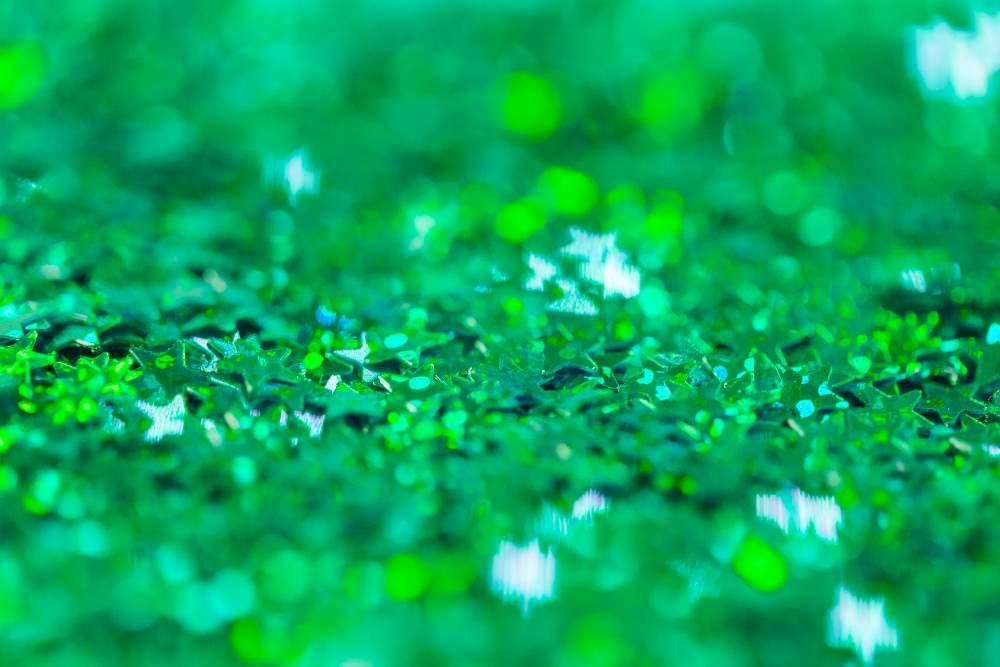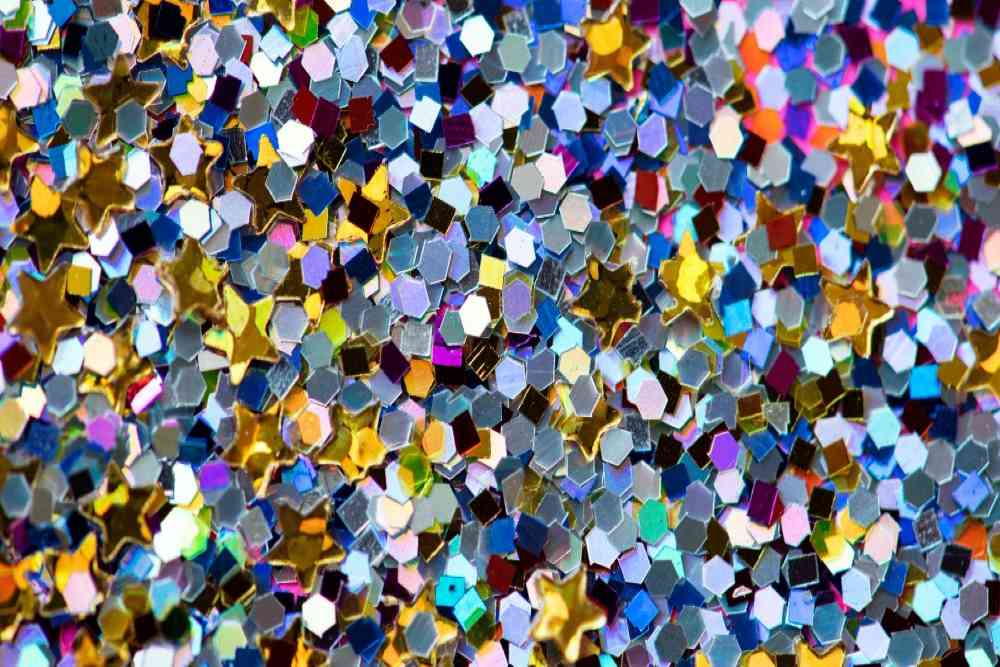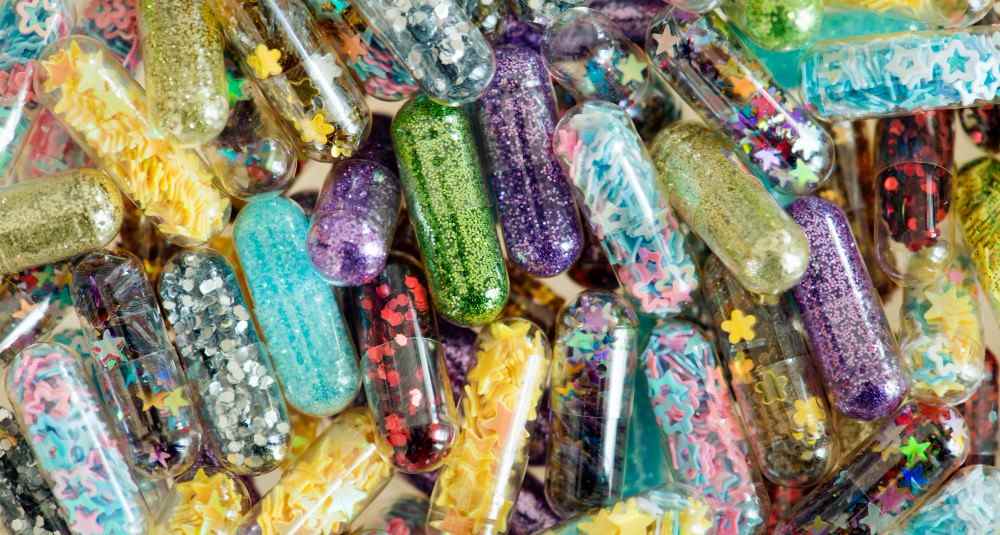How Nanotechnology is Giving Glitter a Green Makeover
Discover how small science is making a big sparkle—with sustainable polymers.

Every child knows the fun of glitter. It makes the dullest of drawings or greeting cards so much prettier, can be added to make-up, and gives everything it touches an added sparkle.
However, every environmentalist is aware of the damage that glitter creates as it is a form of microplastic.

Typically made from very thin sheets of plastic, most often PET (polyethylene terephthalate) or PVC (polyvinyl chloride), glitter is given its sparkle by adding layered sheets of colourants, reflective materials, such as aluminium or titanium dioxide, and maybe even holographic films. The sheets are then cut into tiny rectangular, square, or sometimes hexagonal particles, before being coated with a finish that makes it more durable or (if manufactured as cosmetic glitter) skin safe.
Alongside its surprisingly complex manufacturing process, glitter is also difficult to dispose of sustainably. Its minute size makes it difficult to collect and, as it is often mixed in with other materials, such as lip gloss, eye shadow, or glue, becomes almost impossible to sort and recycle.
The result is plenty of glitter (a.k.a. microplastic) going to landfill, incinerators, or being left to decompose over many decades in nature.
So, although glitter is small, it is creating a big environmental problem. In fact, according to a 2019 ‘Glitter is Litter’ campaign, a U.K.-based glitter manufacturer Ronald Britton Ltd. estimates that 10,000 tons of glitter are produced annually.

Despite manufacturers best efforts to develop biodegradable substitutes, the consistent size, shape, and vivid colours that make traditional glitter so appealing for use in cosmetics and craft projects have proven difficult to manufacture without using plastic.
However, this problem may now be solved thanks to the smart application of nanomaterials.
The breakthrough was made by nanotechnology researchers at the University of the Chinese Academy of Sciences who were able to transforms cellulose— the primary building block of plant cell walls, into carefully formed particles which can reflect light in a way that we see as colour.
As Michael Berger, a nanomaterial expert and author of the Royal Society of Chemistry’s Nanotechnology: The Future is Tiny, explains, “The researchers focused on cellulose nanocrystals (CNCs), microscopic rod-shaped particles extracted from natural cellulose. These nanocrystals naturally stack themselves into spiral structures that create color through light interaction rather than pigments or dyes. Previous attempts to harness this property for glitter production yielded irregular particles with inconsistent coloring, but the new manufacturing process solves this through precise control over particle formation.”
The process starts with an electrically charged needle spraying a suspension of CNCs in water. This produces homogeneous tiny droplets that fall over a silicone oil-coated ethyl cellulose screen that has been properly prepared. The researchers found that applying plasma to this film alters the way droplets propagate across its surface, which has a significant impact on the final particle's colour and shape.
The nanotechnology scientists then created flat, disc-shaped particles that retain their shape and a consistent colour by modifying the surface characteristics of the film until droplets spread at an exact six-degree angle.

By using a plant-based feedstock, the new process creates biodegradable glitter—a sustainable alternative to plastic-based glitter, as it breaks down naturally in the environment, reducing microplastic pollution in oceans and soil.
As the study, which has now been published in the journal Advanced Functional Materials, notes, “In contrast to the synthetic materials [used in plastic glitter], natural cellulose presents several advantages, including low cost, non-toxicity, and sustainability. As a result, cellulose is emerging as a promising alternative for the development of biodegradable and sustainable glitters.”
Related articles: 7 Ways Nanomaterials Can Improve Polymer Products or Nanoparticles Create Dissolvable Polymer Composites
This innovative use of nanomaterials marks a further step forward in how the nanotechnology sector can aid the pursuit of sustainable materials and improved manufacturing. By harnessing the natural properties of cellulose and refining production methods, nanotechnology has created a biodegradable glitter that matches the beauty of its plastic counterpart—without the environmental cost.
Alongside greener glitter, nanotechnology is also helping make other industrial products and processes more sustainable. For example, nanomaterial additives can increase durability to rubbers, coatings, metals, and polymers. Furthermore, by replacing heavier feedstocks, nanomaterials are reducing the weight of composites, allowing manufacturers to make lighter (yet stronger) cars, planes, boats, and more.
While the application of nanotechnology to produce biodegradable glitter may sound insignificant, it is part of a larger picture towards circular production. Offering another glimmer of hope into a future where sparkle and sustainability can shine together.
Photo credit: Raw pixel on Freepik, Wikimedia, Raw pixel, & Freepik

